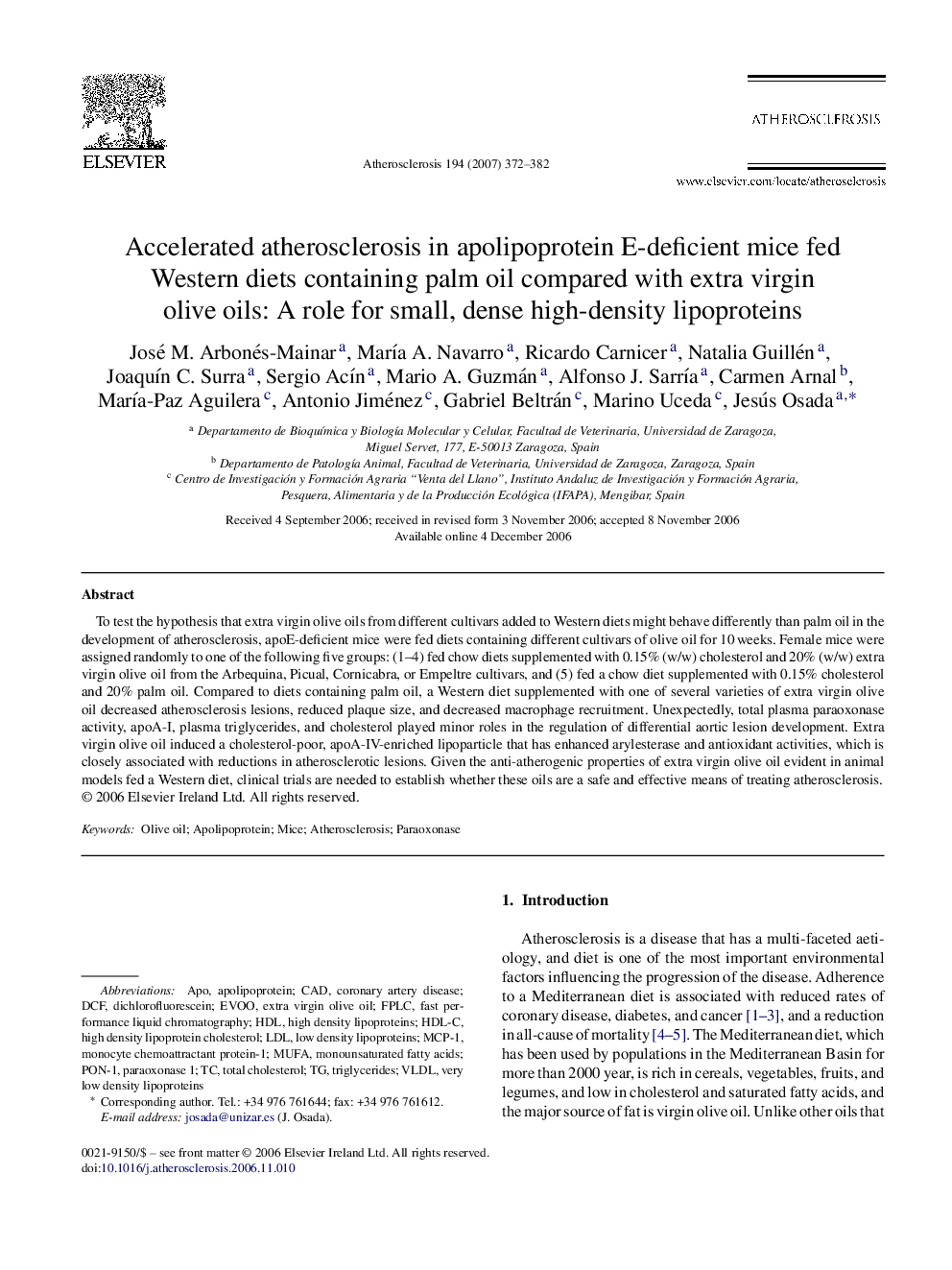| Article ID | Journal | Published Year | Pages | File Type |
|---|---|---|---|---|
| 2894433 | Atherosclerosis | 2007 | 11 Pages |
To test the hypothesis that extra virgin olive oils from different cultivars added to Western diets might behave differently than palm oil in the development of atherosclerosis, apoE-deficient mice were fed diets containing different cultivars of olive oil for 10 weeks. Female mice were assigned randomly to one of the following five groups: (1–4) fed chow diets supplemented with 0.15% (w/w) cholesterol and 20% (w/w) extra virgin olive oil from the Arbequina, Picual, Cornicabra, or Empeltre cultivars, and (5) fed a chow diet supplemented with 0.15% cholesterol and 20% palm oil. Compared to diets containing palm oil, a Western diet supplemented with one of several varieties of extra virgin olive oil decreased atherosclerosis lesions, reduced plaque size, and decreased macrophage recruitment. Unexpectedly, total plasma paraoxonase activity, apoA-I, plasma triglycerides, and cholesterol played minor roles in the regulation of differential aortic lesion development. Extra virgin olive oil induced a cholesterol-poor, apoA-IV-enriched lipoparticle that has enhanced arylesterase and antioxidant activities, which is closely associated with reductions in atherosclerotic lesions. Given the anti-atherogenic properties of extra virgin olive oil evident in animal models fed a Western diet, clinical trials are needed to establish whether these oils are a safe and effective means of treating atherosclerosis.
